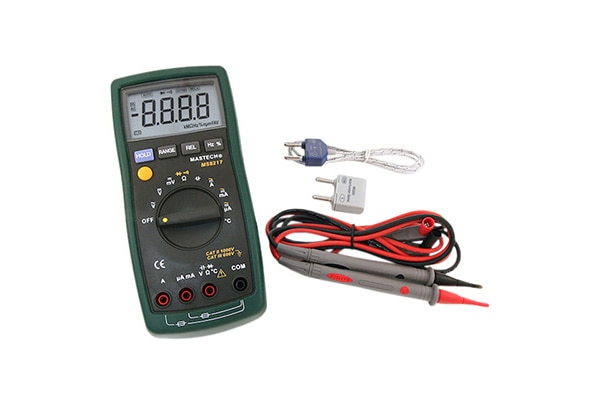What are Multimeter CAT (Category) Safety Ratings?
If you’ve ever used a multimeter before, or looked at a datasheet for one, you’ve likely noticed a CAT (category) safety rating. What is that and why is it important? This blog and corresponding video will cover those questions.
According to the IEC (International Electrotechnical Commission), multimeter manufacturers must follow the safety testing guidelines for all of their products to ensure that each device meets or exceeds the rating required. These measures are put in place to protect the user from unintentional shock, potentially resulting in death.
There are four levels defined by the type of load to be measured.
|
CAT I |
Electronic Devices |
Anything from a small circuit board to larger device with high-voltage but low-energy |
| CAT II |
Single-Phase AC Loads |
Appliances or portable tools |
| CAT III |
Three-Phase Distribution |
Some large building lighting systems and polyphase motors |
| CAT IV |
Three-Phase Utility Connections or Outdoor Conductors |
Electrical meters, outdoor connections, any low-voltage and high-energy connection |
Within these four levels, the IEC has setup transient test guidelines for each category.
| Measurement Category | Working Voltage | Transient Voltage | Test Source (Impedance) |
| CAT I | 150 V | 800 V | 30 Ohms |
| CAT I | 300 V | 1500 V | 30 Ohms |
| CAT I | 600 V | 2500 V | 30 Ohms |
| CAT I | 1000 V | 4000 V | 30 Ohms |
| CAT II | 150 V | 1500 V | 12 Ohms |
| CAT II | 300 V | 2500 V | 12 Ohms |
| CAT II | 600 V | 4000 V | 12 Ohms |
| CAT II | 1000 V | 6000 V | 12 Ohms |
| CAT III | 150 V | 2500 V | 2 Ohms |
| CAT III | 300 V | 4000 V | 2 Ohms |
| CAT III | 600 V | 6000 V | 2 Ohms |
| CAT III | 1000 V | 8000 V | 2 Ohms |
| CAT IV | 150 V | 4000 V | 2 Ohms |
| CAT IV | 300 V | 6000 V | 2 Ohms |
| CAT IV | 600 V | 8000 V | 2 Ohms |
| CAT IV | 1000 V | 12000 V | 2 Ohms |
If we extend this to calculate the current for the working and transient voltages, you’ll see that even though two CAT ratings cover the same working voltage, that does NOT mean they are an equal.
| Measurement Category | Working Voltage | Transient Voltage | Test Source (Impedance) | Working Current | Transient Current |
| CAT I | 150V | 800V | 30 Ohms | 5A | 26.6A |
| CAT I | 300V | 1500V | 30 Ohms | 10A | 50A |
| CAT I | 600V | 2500V | 30 Ohms | 20A | 83.3A |
| CAT I | 1000V | 4000V | 30 Ohms | 33.3A | 133.3A |
| CAT II | 150V | 1500V | 12 Ohms | 12.5A | 125A |
| CAT II | 300V | 2500V | 12 Ohms | 25A | 208.3A |
| CAT II | 600V | 4000V | 12 Ohms | 50A | 333.3A |
| CAT II | 1000V | 6000V | 12 Ohms | 83.3A | 500A |
| CAT III | 150V | 2500V | 2 Ohms | 75A | 1250A |
| CAT III | 300V | 4000V | 2 Ohms | 150A | 2000A |
| CAT III | 600V | 6000V | 2 Ohms | 300A | 3000A |
| CAT III | 1000V | 8000V | 2 Ohms | 500A | 4000A |
| CAT IV | 150V | 4000V | 2 Ohms | 75A | 2000A |
| CAT IV | 300V | 6000V | 2 Ohms | 150A | 3000A |
| CAT IV | 600V | 8000V | 2 Ohms | 300A | 4000A |
| CAT IV | 1000V | 12000V | 2 Ohms | 500A | 6000A |
Now using CAT III at 600V and CAT II at 1000V as an example clearly displays how just because the rated working voltage is higher, does NOT mean that it can handle as much overall.
There is no sure way to know what rating a meter is without finding the CAT rating either on the unit itself or on the multimeter’s datasheet. Remember, when in doubt, more protection is always better.

Have questions or comments? Continue the conversation on TechForum, DigiKey's online community and technical resource.
Visit TechForum












